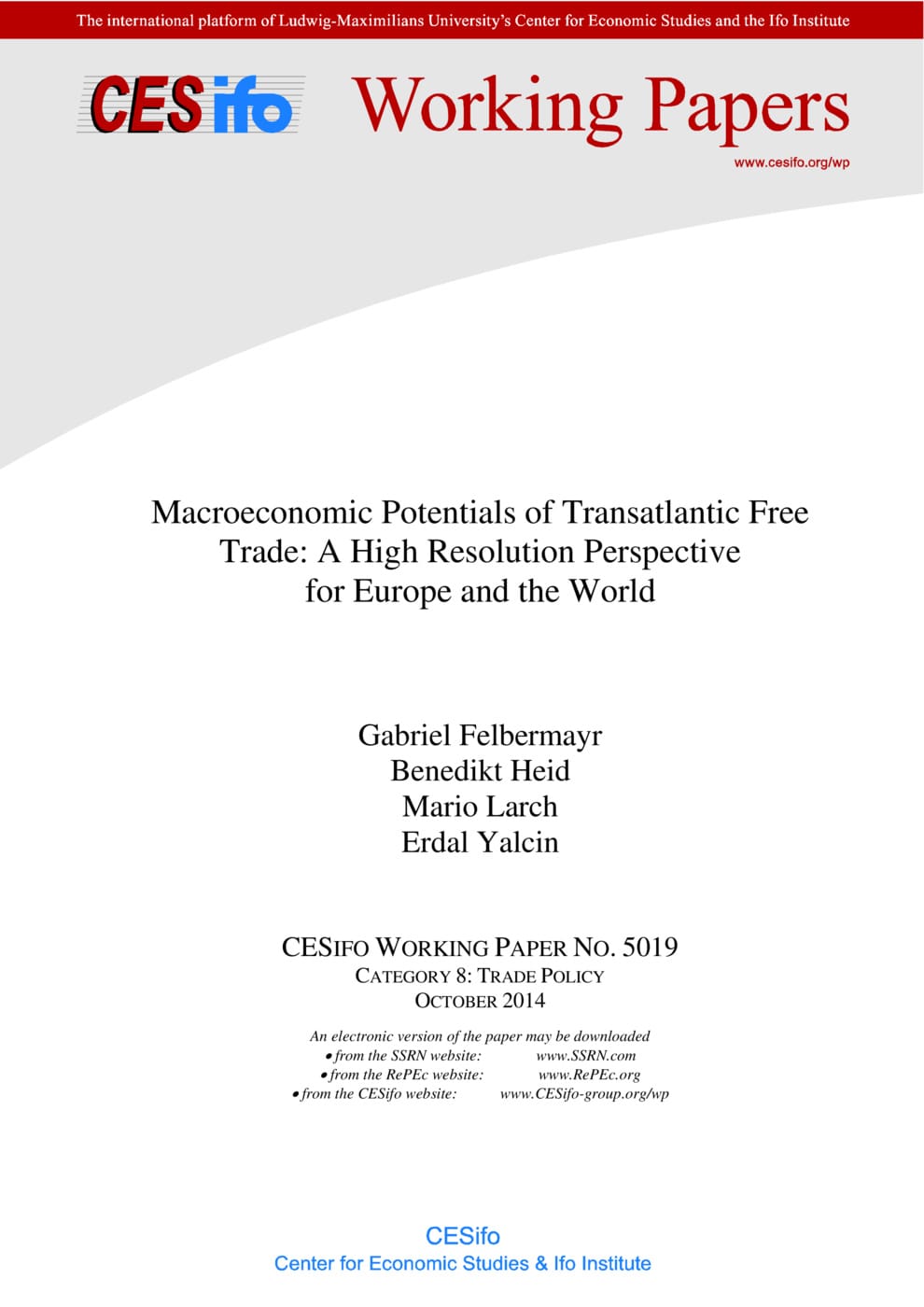Macroeconomic Potentials of Transatlantic Free Trade: A High Resolution Perspective for Europe and the World
CESifo, Munich, 2014
CESifo Working Paper No. 5019

The proposed Transatlantic Trade and Investment Partnership (TTIP) is the most significant trade policy initiative since the Uruguay Round (1986 to 1994). It would create a free trade zone covering 45% of world GDP. However, critics dismiss the possible welfare gains as small compared to the risks. In this paper, we provide results based on a structurally estimated general equilibrium trade model. Assuming that the TTIP will reduce transatlantic trade costs by as much as existing bilateral agreements have reduced trade costs between their trade partners, we find that a TTIP could result in very substantial gains for Germany (+3.5%), Europe (3.9%), and the world (+1.6%), but that it could also harm third countries.
Trade Policy
Empirical and Theoretical Methods